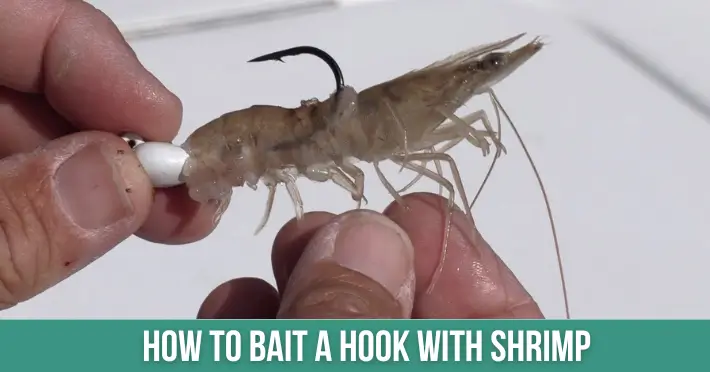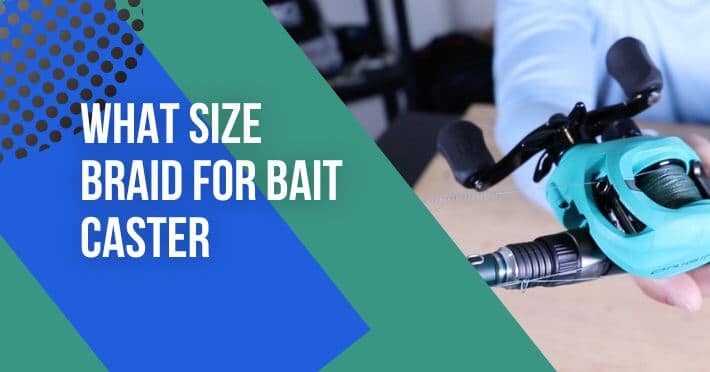Contents
- 1 How To Bait A Hook With Shrimp:
- 2 Gathering Materials:
- 3 Importance of using fresh or frozen shrimp:
- 4 Removing the shell:
- 5 Retaining the tail for added attraction:
- 6 Experimenting with different hook sizes:
- 7 Experimenting with different hook sizes:
- 8 FAQs:
- 9 Can I use frozen shrimp for bait?
- 10 Do I need to devein the shrimp before using it as bait?
- 11 Why is retaining the shrimp’s tail important?
- 12 How do I choose the right hook size for shrimp bait?
- 13 Can I use shrimp bait in freshwater and saltwater fishing?
- 14 What other factors should I consider when baiting a hook with shrimp?
Baiting a hook with shrimp is a straightforward process that can significantly increase your chances of catching fish. To start, take a fresh or frozen shrimp and remove the shell, leaving only the tail for added attraction.
Thread the hook through the tail, making sure it’s securely attached. You can also double-hook the shrimp for better stability. Experiment with different hook sizes based on the shrimp and target fish species.
Consider adding a sinker or bobber to control the depth at which your bait is presented. With these simple steps, you’ll be ready to entice fish with the irresistible allure of a shrimp-tipped hook.
How To Bait A Hook With Shrimp:
Proper baiting is crucial in fishing as it directly influences the success of your angling endeavors. The choice and presentation of bait can significantly impact your ability to attract and entice fish. Fish are naturally drawn to specific scents, colors, and movements, and using the right bait enhances your chances of enticing them to bite.

You’re targeting a particular species or fishing in specific conditions, understanding how to bait a hook effectively increases your chances of a successful catch. In essence, proper baiting is a fundamental skill that allows anglers to create an irresistible allure, making their fishing experience more rewarding.
Gathering Materials:
Before embarking on a fishing excursion, it’s essential to gather the necessary materials for baiting a hook with shrimp. The primary items include fresh or frozen shrimp, a fishing hook of appropriate size, and pliers for handling the hook securely.
The choice between fresh and frozen shrimp depends on availability and personal preference, but both can be effective. Additionally, consider having a sinker or bobber on hand to control the depth at which your bait is presented in the water. Being well-prepared with the right materials ensures a smoother and more successful fishing experience.
Importance of using fresh or frozen shrimp:
The freshness of shrimp plays a critical role in the success of baiting a hook. Whether fresh or frozen, the quality of the shrimp directly affects its attractiveness to fish. Fresh shrimp are preferred for their natural scent and vibrant color, which can be more enticing to fish. However, if fresh shrimp is unavailable, frozen shrimp can serve as a viable alternative.


Frozen shrimp should be properly thawed before use to preserve their natural characteristics. The freezing process retains the scent and texture, making them a practical option when fresh shrimp isn’t accessible.
Ensuring the shrimp is in good condition enhances its appeal to fish, increasing the likelihood of a successful catch. In summary, whether fresh or frozen, the condition of the shrimp is pivotal, influencing its effectiveness as bait and ultimately contributing to the angler’s success.
Removing the shell:
The process of removing the shell from the shrimp is a crucial step in preparing it as bait for fishing. The shell removal not only makes the shrimp more visually appealing to fish but also exposes its natural scent, making it more attractive. Here’s a simple guide on how to remove the shell effectively:
Hold the Shrimp: Take a fresh or thawed shrimp in your hand, ensuring it is clean and free of debris.
Tail Grasp: Hold the shrimp by its tail with one hand. This makes it easier to manipulate and reduces the risk of damaging the delicate flesh.
Shell Peel: With your other hand, gently peel the shell away from the shrimp. Start from the underside, where the legs are attached, and work your way up toward the head.
Careful Deveining (Optional): While peeling, you may choose to devein the shrimp by removing the dark digestive tract running along its back. Use a small knife or the tip of your fingernail to lift and discard the vein.
Retain the Tail: After removing the shell, leave the tail intact. The tail adds movement and visual appeal to the bait, making it more enticing to fish.
By carefully removing the shell while preserving the shrimp’s natural form, you enhance its attractiveness as bait, increasing the likelihood of a successful fishing experience.
Retaining the tail for added attraction:
Retaining the tail when preparing shrimp as bait is a key strategy to enhance its allure for fish. The shrimp’s tail serves multiple purposes, making it an integral part of the bait presentation:
Visual Attraction: The tail adds a dynamic and visually appealing element to the bait. Fish are often attracted to movement, and the natural swaying motion of the shrimp’s tail in the water can attract attention from a distance.
Realism: Leaving the tail intact maintains the natural appearance of the shrimp. Many fish species are conditioned to recognize a shrimp’s distinct shape and movement, and a bait that closely mimics the real thing is more likely to be perceived as suitable prey.
Scent Release: The tail of the shrimp contains scent glands, releasing enticing aromas into the water. This natural scent trail can attract fish from a distance and stimulate their predatory instincts.
When threading the hook through the shrimp, ensure that it passes through the tail securely. This not only maintains the shrimp’s lifelike appearance but also increases the chances of enticing fish to strike. Overall, retaining the tail is a valuable technique in maximizing the effectiveness of shrimp as bait during fishing.
Experimenting with different hook sizes:
Experimenting with different hook sizes is a valuable approach in optimizing your fishing setup and increasing the chances of a successful catch. The choice of hook size can significantly impact your ability to secure a good hookset and effectively land the fish. Here’s why experimenting with various hook sizes is beneficial:

Matching the Bait: Different shrimp sizes may require different hook sizes for proper presentation. Using a hook that complements the size of the shrimp ensures a natural and balanced appearance, making it more appealing to fish.
Targeting Specific Species: Certain fish species have varying mouth sizes and feeding behaviors. Experimenting with different hook sizes allows you to tailor your approach to the specific species you’re targeting, increasing the likelihood of a successful hookset.
Balancing Strength and Stealth: Larger hooks provide more strength but may be more visible to fish, potentially affecting their willingness to bite. Smaller hooks offer increased stealth but might not be suitable for larger or more aggressive fish. Experimenting helps strike the right balance for your fishing situation.
Environmental Factors: Fishing conditions, such as water clarity and current strength, can influence the effectiveness of different hook sizes. Adapting your hook size based on these factors improves your overall chances of success.
To determine the optimal hook size, consider factors like the size of the shrimp, the target species, and the prevailing fishing conditions. By being open to experimentation, anglers can fine-tune their setups for different scenarios, maximizing their chances of a successful and enjoyable fishing experience.
Experimenting with different hook sizes:
Experimenting with different hook sizes is a valuable approach in optimizing your fishing setup and increasing the chances of a successful catch. The choice of hook size can significantly impact your ability to secure a good hookset and effectively land the fish. Here’s why experimenting with various hook sizes is beneficial:
Matching the Bait: Different shrimp sizes may require different hook sizes for proper presentation. Using a hook that complements the size of the shrimp ensures a natural and balanced appearance, making it more appealing to fish.
Targeting Specific Species: Certain fish species have varying mouth sizes and feeding behaviors. Experimenting with different hook sizes allows you to tailor your approach to the specific species you’re targeting, increasing the likelihood of a successful hookset.
Balancing Strength and Stealth: Larger hooks provide more strength but may be more visible to fish, potentially affecting their willingness to bite. Smaller hooks offer increased stealth but might not be suitable for larger or more aggressive fish. Experimenting helps strike the right balance for your fishing situation.
Environmental Factors: Fishing conditions, such as water clarity and current strength, can influence the effectiveness of different hook sizes. Adapting your hook size based on these factors improves your overall chances of success.
To determine the optimal hook size, consider factors like the size of the shrimp, the target species, and the prevailing fishing conditions. By being open to experimentation, anglers can fine-tune their setups for different scenarios, maximizing their chances of a successful and enjoyable fishing experience.
Conclusion:
In conclusion, the art of baiting a hook with shrimp is a fundamental skill that can significantly enhance your fishing success. From selecting the right materials to preparing the shrimp with precision, each step plays a crucial role in creating an irresistible lure.
Retaining the shrimp’s tail adds visual appeal and scent while experimenting with different hook sizes allows you to tailor your approach to specific fishing conditions and target species.
By honing these techniques, you increase your chances of a successful catch, making your fishing experiences more enjoyable and rewarding. Happy fishing!
FAQs:
Can I use frozen shrimp for bait?
Yes, frozen shrimp can be an effective bait. Ensure proper thawing before use to preserve its natural scent and texture.
Do I need to devein the shrimp before using it as bait?
Deveining is optional but can enhance the bait’s presentation. It removes the dark digestive tract, creating a cleaner appearance.
Why is retaining the shrimp’s tail important?
Retaining the tail adds visual attraction, mimics natural shrimp movement, and releases scent, making the bait more enticing to fish.
How do I choose the right hook size for shrimp bait?
Experiment with different hook sizes based on shrimp and target species. Match the hook size to the shrimp’s size and consider the fish species you’re targeting.
Can I use shrimp bait in freshwater and saltwater fishing?
Yes, shrimp bait is versatile and can be used in both freshwater and saltwater environments. Adjust your techniques based on the specific fishing conditions.
What other factors should I consider when baiting a hook with shrimp?
Factors like water clarity, current strength, and the behavior of the target fish species should be considered. Adapt your approach accordingly for optimal results.







